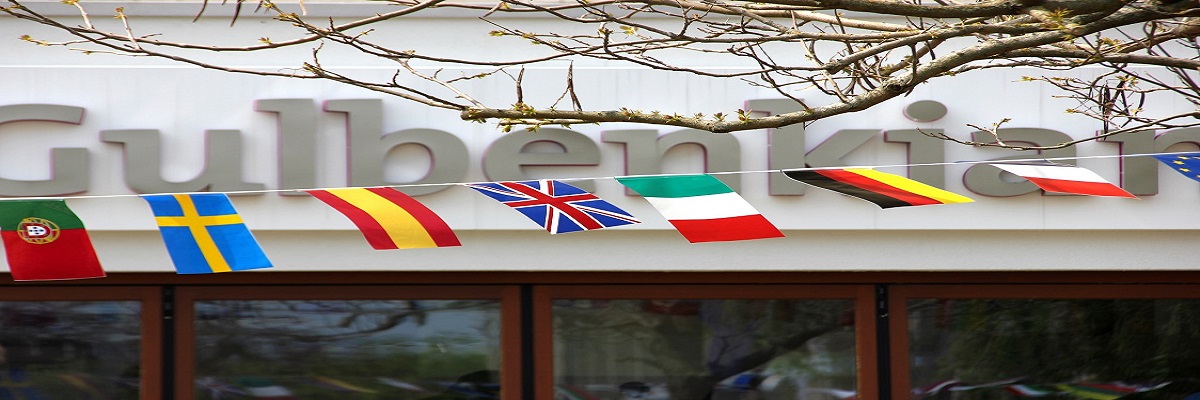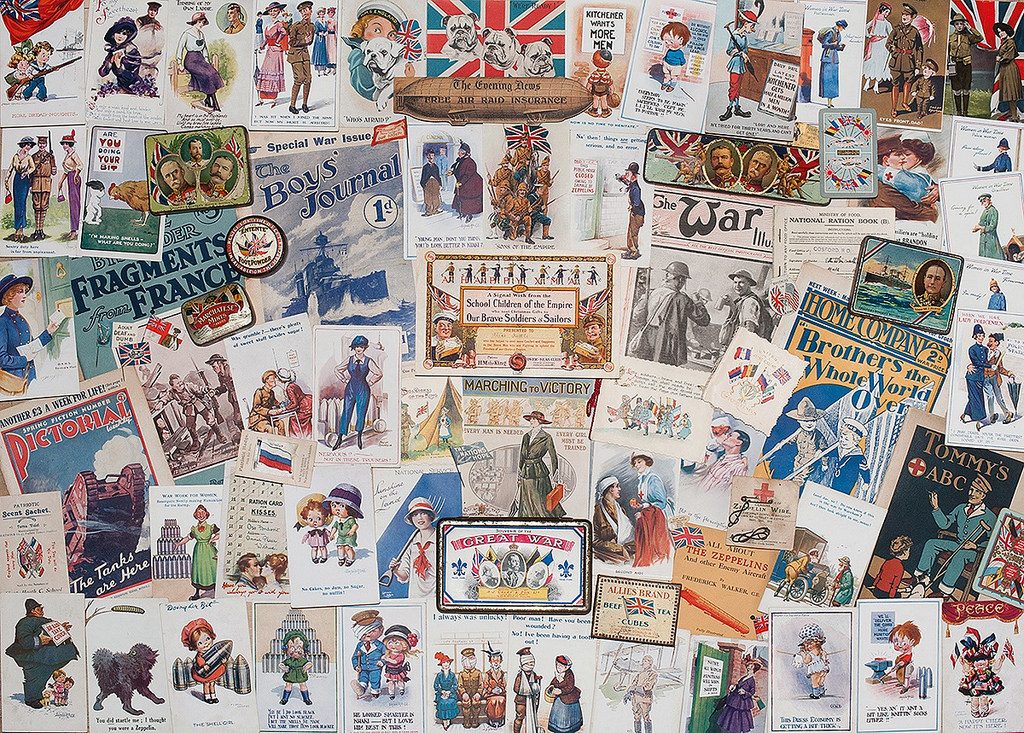Written by David Budgen.
Children growing up in the era of the First World War were encouraged to help with the war effort in a number of ways; between 1914 and 1918 they collected conkers and wool from hedgerows, gathered salvage, and worked in war industries and on the land. Much of their leisure time would also have been taken up with the war. In particular, a wealth of fiction – novels and story papers – utilised the war as a setting. ‘Perhaps,’ argues Niall Ferguson, ‘the grim truth about war propaganda was that it had the greatest influence on the social group which mattered least to the war effort: children’. This influence can be seen in the aforementioned ways in which children partook in the war effort. And yet, although children’s books were undoubtedly topical responses to relatively contemporary events, the extent to which these works functioned as propaganda is worthy of some discussion.
Children’s authors certainly conveyed many of those same messages encouraged by official propagandists. The protagonists of their tales were often unquestioning patriots, whose belief in the justness of the war was rarely challenged. But what exactly were these writers saying about the war? The ethos that authors sought to promote was little different from ideas and values disseminated in the years before the First World War. Many novels followed closely the blueprint established by earlier writers such as G. A. Henty, and his successors had indeed been writing similar tales themselves in the decade or so before 1914. Early in the war, reviewers noted that in works written by such authors as Percy Westerman, F. S. Brereton and Herbert Strang, descriptions of battles seemed to be cribbed almost wholesale from recent newspaper accounts. Children’s fiction did encourage an all-encompassing knowledge of the conflict and its various theatres – more so than modern children’s fiction, which has remained resolutely focused on the Western Front – but the war was firmly seen in a traditional context. If these works did function as propaganda, then, it was in the inculcation of values that existed beyond the war.
For boys’ fiction, this often meant generalised understandings of duty and manliness. It was in fiction aimed at young girls, however, that we see actual engagement with social issues. Writers including Angela Brazil and Bessie Marchant were seen as the female equivalents of Westerman et al. They tended to be middle-class conservatives, with strict understandings of girls’ roles in society. Their pre-war output, for example, was largely dismissive of the campaign for women’s suffrage. Even Marchant, whose adventure stories were set in the far-flung reaches of the globe, was criticised in the Manchester Guardian for the anti-suffragist rhetoric of The Loyalty of Lester Hope (1913). Attitudes did change, however. In Marchant’s A VAD in Salonika (1917), a mother ponders the role of women in the war: ‘We are compelled to send our boys into the danger zone, so why should our girls be withheld?’ Brenda Girvin, another popular author of girls’ fiction, worked in munitions during the war, and her new-found friendships with working-class munitionettes influenced her writing in works including Munition Mary (1918). Even the most conservative of writers, Angela Brazil, recognised the changes brought about by the war, noting in A Patriotic Schoolgirl (1918), ’As nurses, ambulance drivers, canteen workers, telephone operators, some have played their part in the field of the war; and their sisters at home have worked with equal courage to make munitions, and supply the places left vacant by the men.’ As the war progressed, some authors of girls’ fiction seemed to become more open to notions of change.
Of course, the tone of boys’ fiction did change in the course of the war, and by the end more realistic depictions of warfare were common. Indeed, having previously partially abandoned the setting for other theatres, thereby circumnavigating the horrors of trench warfare, writers returned to the subject of the Western Front as it neared its conclusion. If more nuanced representations appeared by the end of the war we can ask again, was this propaganda? Was greater realism a hallmark of propaganda? Had avoiding the Western Front functioned as propaganda by omission, a deliberate attempt to shield children from the reality of the war so that notions of justness would not be questioned? This seems a little far-fetched. Most of these authors left behind little indication of their thinking beyond their actual literary output, but a few key points can be made. Firstly, if writers were avoiding the Western Front, they were not doing so completely. Furthermore, there were many other ways in which children could learn about the realities of the war in the trenches; schoolchildren were actively encouraged to attend screenings of Malins and McDowell’s The Battle of the Somme (1916). Indeed, children’s understandings of war could be quite sophisticated. Story papers such as Chums, for example, were satirising the Germanophobic spy scare within weeks of the outbreak of war.
As for the social attitudes and ethos perpetuated in children’s fiction, we cannot be so sure that this influenced children greatly. While young working-class readers writing to Angela Brazil adopted the language and register of her protagonists, as Jonathan Rose has shown, working-class readers did not necessarily adhere to the ideology of their reading material. Fred Inglis argued that his childhood taste for adventure fiction “sprang from pure admiration for the reckless, athletic courage of the hero, the simplicity and vividness of his moral and pugnacious reflexes”, and that socially conservative, even fascistic elements to such works as Bulldog Drummond were bypassed, or even unseen, by many readers.
If children’s fiction was intended to function as propaganda, it was difficult to ascertain its effectiveness, and often writers were preaching to the converted. There was plenty of other specific propaganda that encouraged support of the war effort and belief in Britain’s cause. Topicality would have perhaps been more of a draw to young readers, who would have had a thirst for knowledge of the subject, and a desire for tales of adventure that went beyond the events of 1914-18. By the end of the war, boys’ fiction had become more nuanced, but the legacy of those pre-1914 adventure stories was still very much evident, and most of the wartime writers returned to more traditional settings almost as soon as the war was over. In those works aimed at girls we can see a greater understanding of societal change, and a growing support for such developments, although this should not be taken too far. While there were certainly propagandistic elements to children’s fiction aimed at both girls and boys, particularly in regard to their depiction of the enemy, they were not necessarily towing a government line. Moreover, although such works could be influential, authors could not guarantee the nature of that influence.
David Budgen is an Associate Lecturer in the School of History at the University of Kent and in the School of Humanities at Canterbury Christ Church University. Image Credit: CC by Paul Townsend/Flickr.

